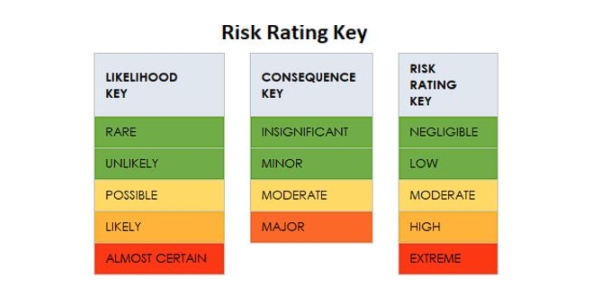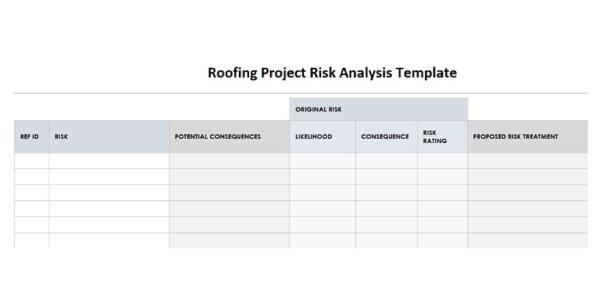Project Risk Management – Part Two

By John Kenney, Cotney Consulting Group.
Learn more about project risk management and how to identify risks before they happen.
In part one, we learned about the meaning of risk management and understanding risk with project management. Part two of this project risk series will discuss recognizing and classifying risks before you begin a project and avoid potential losses.
When planning your next roofing project, you should create a risk assessment matrix, a tool designed to analyze risk. By doing so, your company can detect and prioritize various risks by judging the probability of occurrence. This is the qualitative portion of the risk analysis process.
The first question you should ask is, "What could go wrong?" Consider all the potential risks to avoid these events from happening, then follow these steps:
-
Recognize hazards: Think about all potential risks that could harm your roofing project.
-
Analyze the risks: Once you have identified the correct risks, the next step is to evaluate them carefully.
-
Evaluate the likelihood of the risk: Assess the probability of certain risks occurring during your roofing project's lifecycle and grade them on a scale of one through five. One is rare, up to five being almost certain.
-
Evaluate the severity (consequence) of the risk: Describe the possible damage or impact of risks, then grade them on a scale of one through five. One being insignificant, up to five being major.
-
Risk rating key: Depending on your answers to the first two questions about the identified risk, you will grade them on the overall impact on your project on a scale of one through five. One being negligible, up to five being extreme.
Below is an example of a Risk Rating Key and a sample Roofing Project Risk Analysis Sheet:


Your risk assessment matrix is not set in stone. It would be best if you revisited it regularly so that you notice and detect the new and emerging risks.
Risk ownership
Once you've identified and ranked the risks, it's time to set up the role of a risk owner, the person or persons that ensure proper risk management. The risk owner will oversee all steps to manage each identified risk. In the roofing industry, both the company stakeholders and project teams should make efforts to control risk. Assigning a risk owner is vital because this helps ensure that a risk response plan is developed, maintained, and acted upon quickly.
Risk response planning
Now that you've ranked the risks and identified the risk owner, it's time to plan how to manage each risk. There are several risk response strategies, each with specific actions to implement. These strategies include:
Risk avoidance: Your project team can never eliminate all risk events, but you can avoid some risks. For example, you can avoid overloading a roof structure by preplanning where to distribute the weight over joists or decking.
Risk transfer: Shift the consequence of a risk to a third party. Risk transfer nearly always involves payment of a risk premium to the party taking on the risk, for example, insurance, performance bonds, warranties, and guarantees. Transferring the risk does not eliminate the risk itself.
Mitigation: Reduce the probability or consequences of an adverse risk event to an acceptable level. Taking early action is more effective than trying to correct the ramifications.
Risk acceptance: Your project team may decide not to change the initial plan and handle the risk, or they cannot identify a suitable response strategy. In this case, you need a contingency plan in case a risk occurs.
Risk monitoring: Risks, by nature, arise from uncertainties beyond anyone's control. The best thing a project manager can do is to identify, analyze, and monitor risks. As the paying field changes, so should risk response. Risk monitoring involves:
-
Look and identify new risks.
-
Taking quick corrective action when a risk emerges.
-
Plan preventive actions once you have identified a new risk.
-
Measuring the effectiveness of your risk responses.
Meetings are an essential part of this process. Regular meetings ensure that all project team members know what risks may arise, so they will be equipped to look out for symptoms and come up with good risk responses.
Part three of this project risk series will discuss quantitative elements of a roofing project risk management plan and close our series with the program's benefits for your roofing company.
Learn more about Cotney Consulting Group in their directory or visit www.cotneyconsulting.com.
About John Kenney
John Kenney is the Chief Executive Officer at Cotney Consulting Group. Prior to starting Cotney, John had 45 years of experience in the construction industry. John began his career by working as a roofing apprentice at a family business in the Northeast. Because of his skill and hard work, he progressed from roofing laborer to foreman, estimator, chief estimator, Vice President, and Chief Operating Officer with his various companies. John has worked for multiple Top 100 Roofing Contractors and is intimately familiar with all aspects of roofing production, estimating, and operations. In his last role, John was responsible for the daily operations and performance of a large commercial roofing contractor. During his tenure, John ran business units associated with delivering excellent workmanship and unparalleled customer service while ensuring healthy net profits for his company.




-2025-xtv-mls-tour-2.png)

















Comments
Leave a Reply
Have an account? Login to leave a comment!
Sign In